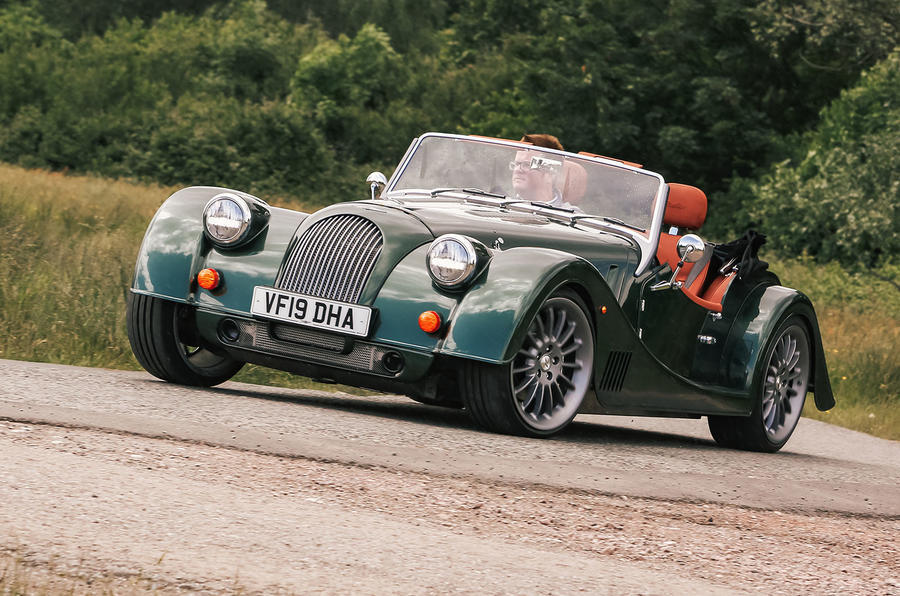Here is the definitive top 10 list of the best sports cars currently on sale, each with a compelling reason to take top spot – but only one can claim the throne…
When picturing a modern sports car, you might imagine anything from a lightweight track car or a modern hot hatchback, to a mid-engined two-seater or a front-engined grand touring coupé.
For the purposes of this top 10 chart, however, we can narrow our terms of reference down a bit; Caterham Sevens, Ferrari 488s, Alpine A110s and BMW M cars are ranked and dealt with elsewhere. Here, we’re interested in full-sized, fulsomely endowed, dedicated sports cars priced between about £60,000 and £120,000. Only grown-up, big-hitting, multi-faceted and purpose-built options get in.
Front-, mid- and rear-engined offerings are included, likewise rear-drive and four-wheel-drive layouts, open and closed cockpits and both simple petrol and hybrid powertrains. There are plenty of routes towards the level of indulgent performance, vivid handling poise, immersive driver engagement and character you’d expect of a true sports car, after all. But which should you take – and why?
1. Porsche 911 Carrera & Carrera S
So far we’ve driven the new 992 generation of Porsche’s 911 in both rear-driven Carrera S and four-wheel-drive Carrera 4S guises. Both tests suggested that this eighth-generation, rear-engined sporting hero is every inch as great a driver’s car as the 991 it has replaced – and, if anything, stands ready to take the game away from its rivals.
Having grown longer and slightly wider than the car it replaces, the 992 is available in 380bhp regular ‘Carrera’ and 444bhp ‘S’-derivative form. Both are twin-turbocharged and, for now, come with eight-speed PDK gearboxes and with either rear- or four-wheel drive. Manual 992 are expected to arrive in the UK in early 2021.
Both versions use what used to be called the 911’s ‘widebody’ shell (which has been lightened by more extensive use of aluminium in its construction), while four-wheel steering is now an option even on non-GT-level cars and mixed-width wheels and tyres come as standard.
Although there’s as much reason as ever for the keenest of drivers to stick with the car’s purer rear-driven mechanical layout, the 992’s wider front axle track and quickened steering ratio seem to have sharpened the car’s handling very effectively. Its turbocharged engine might not have the textural qualities of Porsche’s old atmospheric engines, but it makes for very serious real-world performance – and, overall, for a car that remains without equal among direct rivals for usability, for rounded sporting credibility and especially for the accessible, everyday-use, any-occasion brilliance of its driver appeal.
Save money with new 911 deals from What Car?
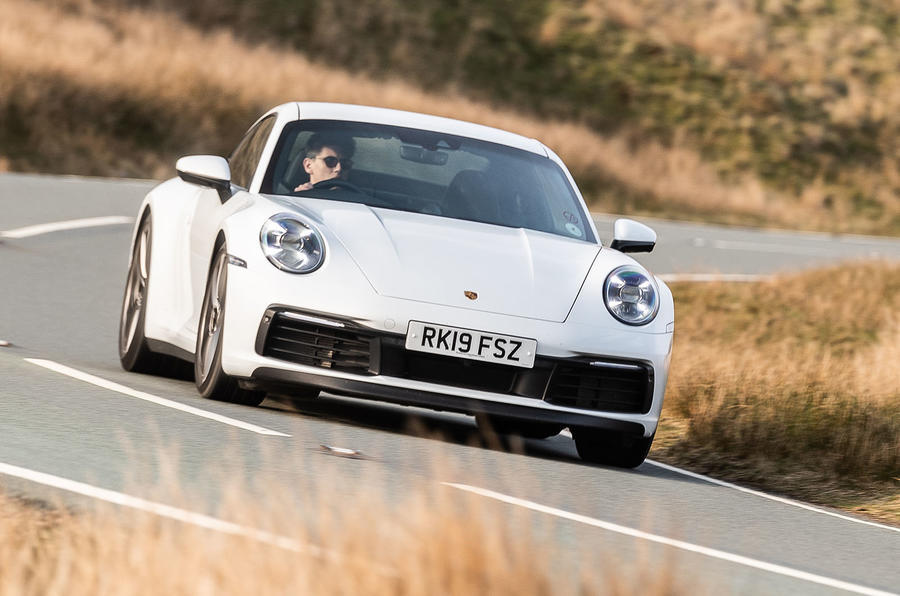
2. Jaguar F-Type
The sales fortunes of Jaguar’s much-hyped successor for the Lyons’-designed E-Type will tell you much about the development of the modern sports car market. When it launched in 2013, we imagined the buying public would value it as a sort of prettier and more dependable modern TVR – favouring the biggest-hitting eight-cylinder engines and viewing it as a cheaper and more powerful front-engined rival to a Porsche 911.
For a while, buyers did exactly so. But as the car aged and the focus of the purist sports car market moved towards the Porsche Cayman and the Alpine A110, the F-Type had to move with it. The six-cylinder models grew in popularity, until Jaguar created another wave of interest in the car by furnishing it with a four-cylinder engine.
After its latest facelift, the F-Type straddles every inch of the same market territory as it always did. At the top of the range, the new ‘R’ version remains a 567bhp, £100,000 upper-level-992 and Aston Vantage rival, while at the lower end it costs less than £60,000 and makes do with just under 300bhp.
Jaguar’s new styling treatment for the car certainly gives it some fresh and distinguishing visual appeal. We have thus far only driven the range-topping ‘R AWD’ coupe, but it charmed us with its somewhat antediluvian V8 hotrod speed and noise, and yet impressed with its outright handling precision and chassis composure.
The F-Type has never been as usable or complete as its key Porsche rival, and is now considerably less ritzy or technologically sophisticated inside. There is, however, still an awful lot to like about it – and plenty of reasons to grab one while you still can.
Save money with new F-Type deals from What Car?
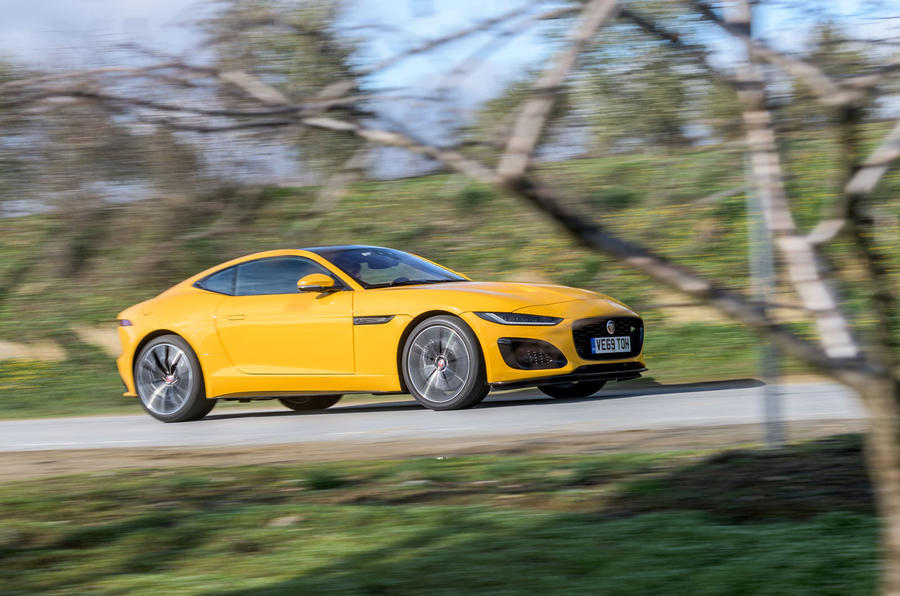
3. Lotus Evora
A decade has now passed since the introduction of Lotus’s mid-engined, 2+2 Porsche-chaser, the Evora.
At the time of its introduction, the car brought plenty of qualities to embrace but also flaws to regret. Today, it retains a chassis and steering system that both truly deserve top billing. Few sports cars have such immersive, positive steering, or a ride and handling compromise so suited to life on British roads; and that’s especially true now that Hethel has introduced the cheaper, softer-suspension GT 410 to compliment the GT 410 Sport.
However, that which was questionable about the Evora’s wider case for ownership back in 2009 has become nothing short of decidedly problematic for it now. This Lotus has never really had the powertrain its chassis deserved. Although Hethel now conjures as much as 430bhp from the car’s soulful Toyota-sourced supercharged V6, the Evora’s truculent transmission remains the limit of your enjoyment of it.
A particularly small boot would make weekend touring jaunts difficult, while a tight, inaccessible and relatively antiquated interior stretches the bounds of acceptability on how simple a modern £80,000 sports car ought to be.
Still, if you can find a way to enjoy it, you’ll savour every drive in an Evora. Few cars mix the absolutely brilliant with the inadequate quite so strikingly.
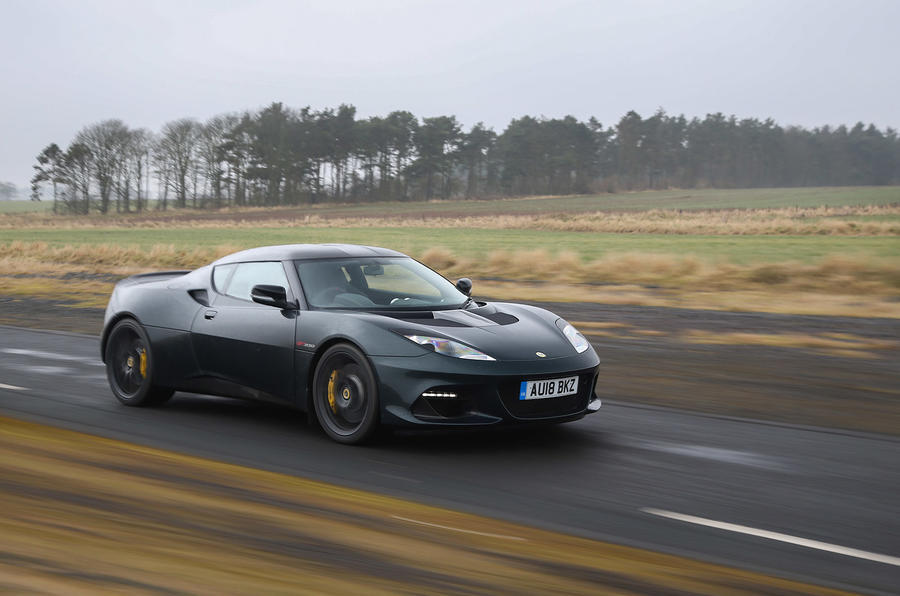
4. Chevrolet Corvette C8
Much has been written about General Motors’ decision to gamble with this, the eighth-generation of its iconic Corvette sports car, by switching from a front-mounted engine to a mid-mounted one. There were objective reasons to do it: because it improves the car’s weight distribution and enhances its outright handling potential. And there was a more complex argument: that a mid-engined layout has become expected of an operator within this part of the sports car market, and the old Corvette’s front-engined configuration made it something of a relic to the latest generation of sports car buyers.
Whatever it took to finally convince GM to make the switch, you could say it was worth it. The C8 Corvette has all of the metal-for-the-money and bang-for-your-buck value appeal as any of its forebears possessed (the car being available for less than a Porsche 718 Boxster in North America), and while its cabin has plenty of ergonomic quirks, it’s the driving experience you’ll come back for.
Bristling with small-block-V8 combustive charm, the C8’s engine has excellent throttle response, a wonderful mid-range power delivery, likes to rev to beyond 6500rpm and sounds superb doing it. For outright performance, it feels broadly in line with the old ‘C7’ Corvette – which is to say, perhaps not quite fully ‘supercar fast’, although, for the money, you’re unlikely to quibble with any run-to-60mph that starts with a ‘3’.
The car handled with plenty of stability and precision in our early test drive, feeling instantly more benign and easier to drive quickly than any of its front-engined forebears – even if slightly numb steering and a predilection for on-the-limit understeer might take the edge of its appeal on trackdays. On that front, of course, UK testing should be more illuminating – while more track-ready, better-equipped test cars than those we’ve tested already might well feel better balanced.
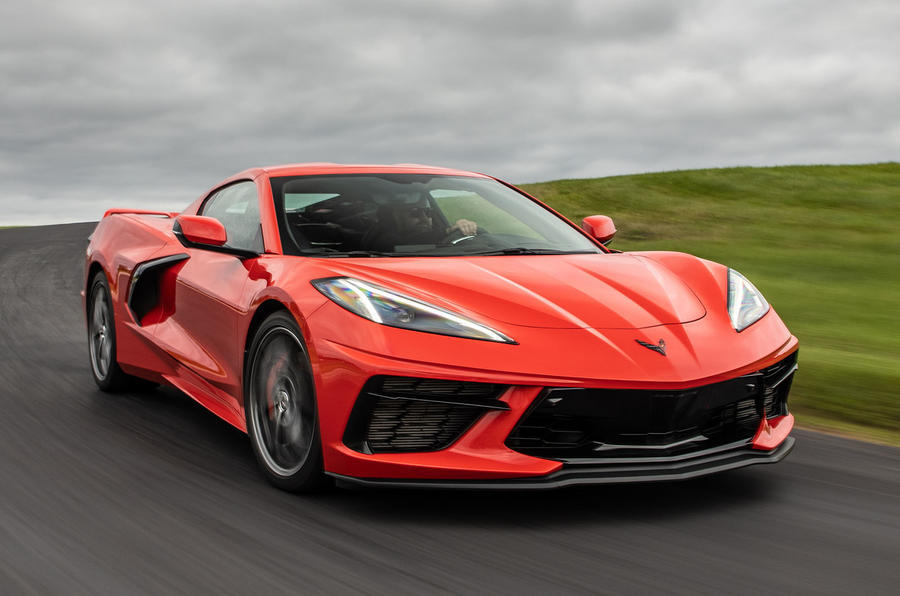
5. BMW i8
The i8 is one of the most compelling and unusual sports cars we’ve tested in years, not only because of its fascinating plug-in hybrid powertrain, its appealing driving experience and its otherworldly design, but also because of how exquisitely finished it feels as a product – both inside and outside – and how easy it would be to live with.
It is available in both closed- and open-roof bodystyles. That the car’s outright performance and handling dynamics fall slightly short of the very best you might expect of a £100,000 sports car is a minor drawback for the i8 – but the problem only really takes the edge off the car’s appeal when it comes to track driving.
It’s ironic that production of the car is set to end this year – at which point the car that has, for as long as we’ve known it, felt so emphatically like the sports car of the future will instead officially be one of the past. Another one to grab while you can, for sure.
Save money with new i8 deals from What Car?
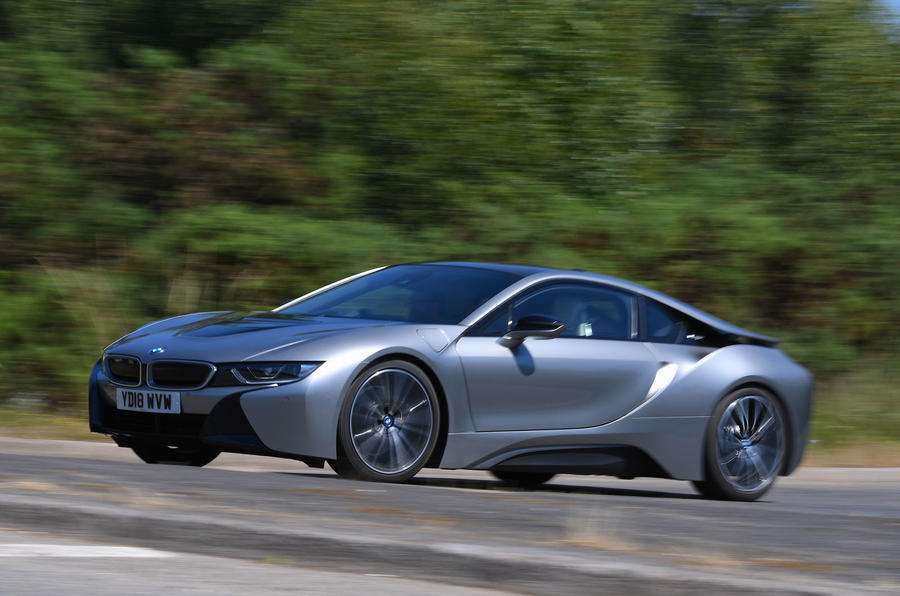
6. Nissan GT-R
However long in the tooth he has become, ‘Godzilla’ will feel as if he’s in rude health right until his last day. If out-and-out real-world, any-condition speed is what you crave from your sports car, nothing does it better below £100k than Nissan’s self-identified ‘world’s fastest brick’ – the incredible, indefatigable GT-R.
But then speed probably isn’t quite all you want in a modern sports car. Nissan knows this. It has therefore tried to make the GT-R a more rounded, luxurious and mature axe-wielding mentalist of a device over recent years and revisions – and it has made a difference, albeit not a big one.
Delicacy and subtlety aren’t this car’s specialisms any more now than before but, compared with the increasingly digital-feeling cars launched around and about it, the GT-R offers more charm than ever. And, in the case of the top-level Nismo version, if now offers serious track suitability as well.
Save money with new GT-R deals from What Car?
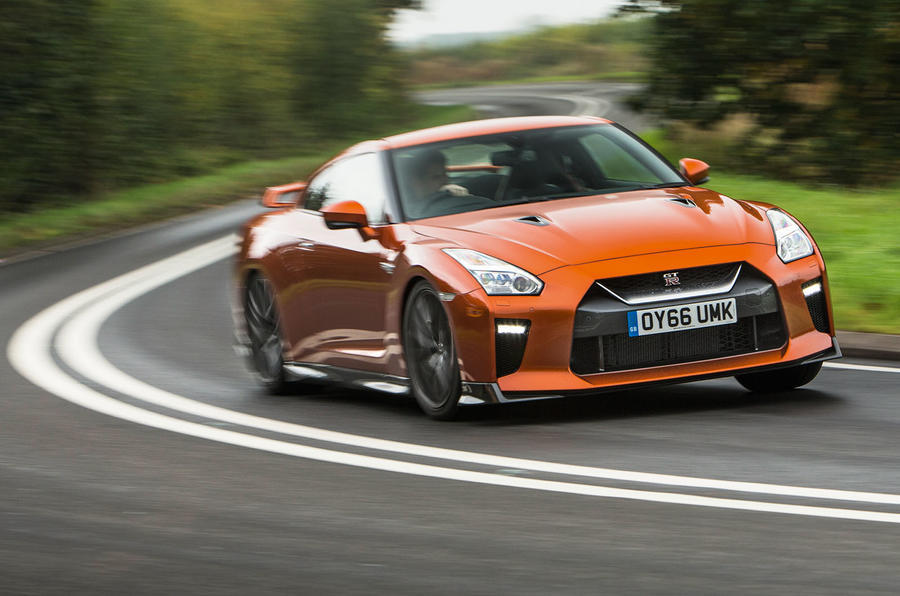
7. Lexus LC
As a keen driver, you feel inclined to make a case for the LC. It has a superbly charismatic and likeable V8 engine, and balanced, spry, involving handling makes it feel, at times, more of a natural rival for a Jaguar F-Type or a Porsche 911 than the mix of two- and four-door sporting grand tourers that Lexus identifies as its true opponents. Hence the car’s inclusion here.
The LC seems large, heavy, leaden-footed and a bit cumbersome on the road at times – so you never quite escape a feeling of ambivalence towards the car. On song, its V8 engine is hugely special; on a smooth surface, its sheer agility and balance are quite something. Equally, the car’s cabin, while remarkably luxurious, wants for much in the way of storage space, and its touring credentials are undermined by a particularly unpleasant run-flat-shod secondary ride.
Ultimately, depending on how much you’re moved by its virtues or irked by its shortcomings, this car is either a bit of a rough diamond or the dreaded curate’s egg. For us, it’s much closer to the former.
Save money with new LC deals from What Car?
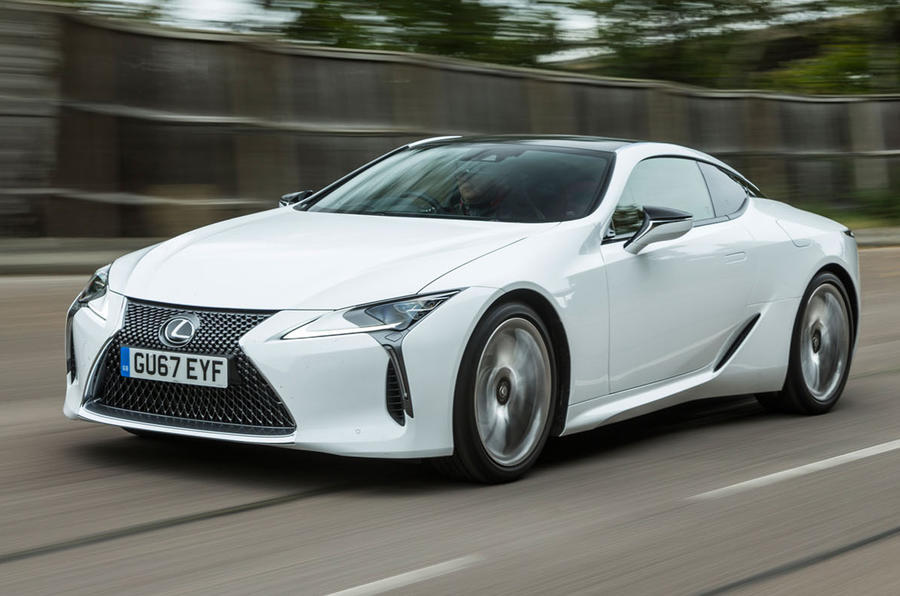
8. Maserati GranTurismo
That Maserati got so many of the basics right with its GranTurismo coupé makes the car’s remaining few failings all the more frustrating. How difficult could it have been to get the seating position right, for example? Or to fix the odd trim fit defect, or perfect the adjustable damping? We’ll never know now that the car has been discontinued, with the very last unregistered examples shortly to disappear from showrooms for good.
More complex, and thus more forgivable, is that just occasionally we wish the GranTurismo’s V8 engine hit a little harder, for all its aural splendour; and that its gearbox felt a little less clunky and antiquated.
While we can’t ignore such troubles in our overall rating, we would be the first to admit the GranTurismo remained a truly desirable and exotic-feeling sporting GT even in its dotage. It’s a car you no longer need to make excuses to buy or to own, especially now that it’s a case of now or never: and, while it’s now a way off the sports car class’s prevailing dynamic standards, it’s still a pleasure to drive.
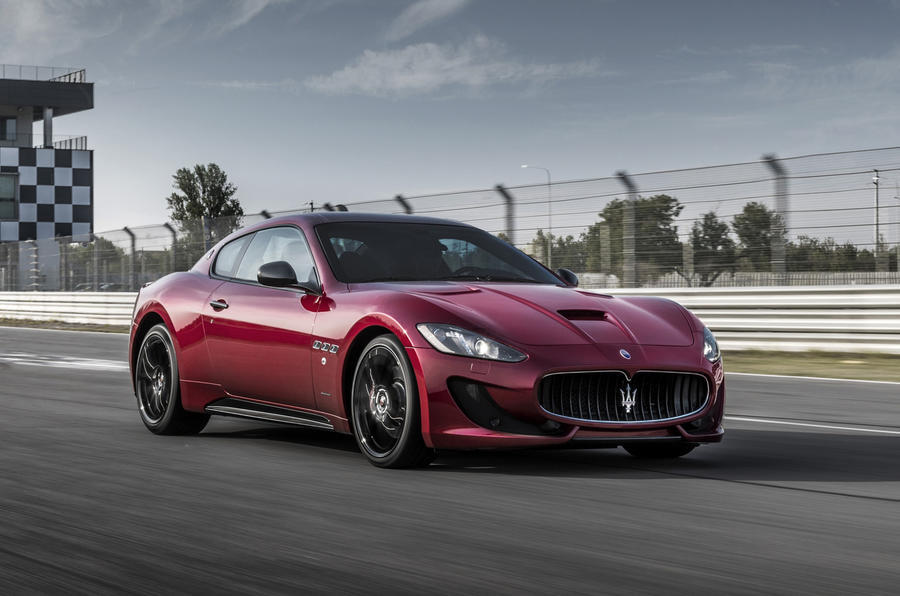
9. Morgan Plus Six
The last few years have been transformative ones at the Morgan Motor Company Ltd. Having been family owned and operated until its 110th anniversary, the firm is now majority owned by private equity, and has just launched it first ground-up new car in almost two decades: this, the Plus Six.
Built on an all-new box-section aluminium monocoque chassis of double the rigidity of that of the old Aero-series Plus Eight, the car uses the same BMW-sourced turbocharged straight six petrol engine that you’ll find in a Toyota GR Supra. And since the 335bhp that it produces is motivating a car that weighs fully half-a-tonne less than a Jaguar F-Type, you can believe that this car is quick.
It’s pretty dynamically sophisticated too, albeit qualified by the fact that it’s a Morgan – and that would have made it a critical mistake to tune this car to feel particularly modern or well-behaved. Electromechanical power steering makes the Plus Six lighter on the rim and easier to handle than Morgans of old, while apparent structural integrity feels pretty good over sharper lumps and bumps, and better again than Morgans of old – though still quite a way from Porsche territory.
The car still delivers greater motive and charm and sense of occasion than outright grip and handling agility – perhaps just as it should. It’s a one-of-a-kind experience, however – and in a market increasingly fond of restomods, is well placed to deliver as much business to Pickersleigh Rd as it feels it’s right to supply.
10. Alfa Romeo 4C
The 4C should have been the car to rocket Alfa Romeo back into the headlines and restore its reputation as a maker of world-class driver’s cars. That it took the Giulia saloon to actually achieve that, arriving a few years later than the 4C, says most of what you need to know about this car – production of which has now officially ceased.
This was supposed to be the sports car with which Turin could launch its talons into the North American market all over again. That idea was soon quashed by Alfa’s management when they realised that the finished 4C, with its carbonfibre construction and hardcore temperament, would be much too uncompromising for that.
The 4C was withdrawn from sale, in closed roof form, in the UK back in 2016. The Spider that remained made a bad situation worse as regards the car’s price, which was always £10,000 higher than it ought to have been in order to really tempt people out of Porsche Caymans and Lotus Elises even in cheaper coupé form.
The car’s handling is nothing if not direct and involving, and its turbo four-pot engine feels pretty potent in a car this light, though it’s lacking a little on richness. Roundedness and everyday usability are what might prevent you from adopting the 4C: those, at any rate, and the £60k price tag.
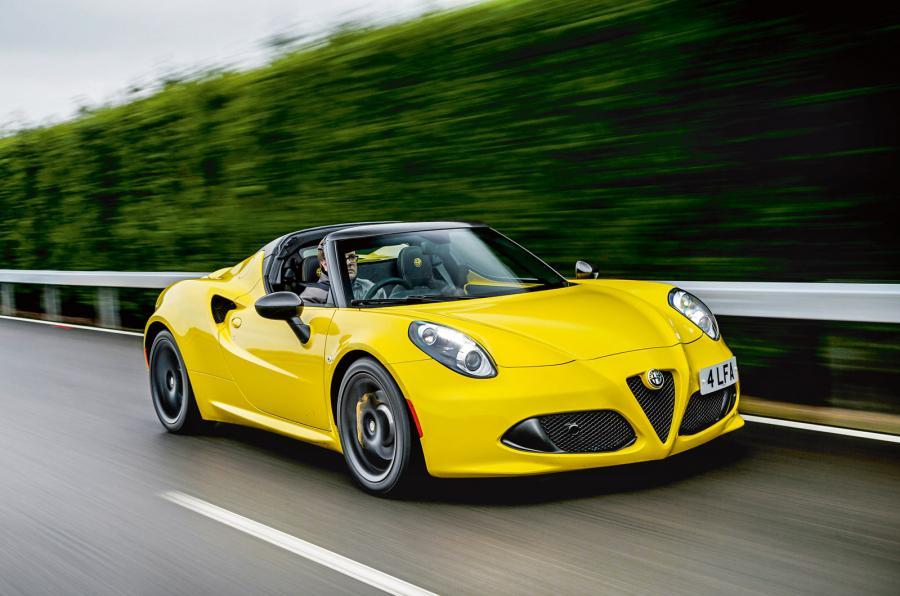
Source: Autocar

